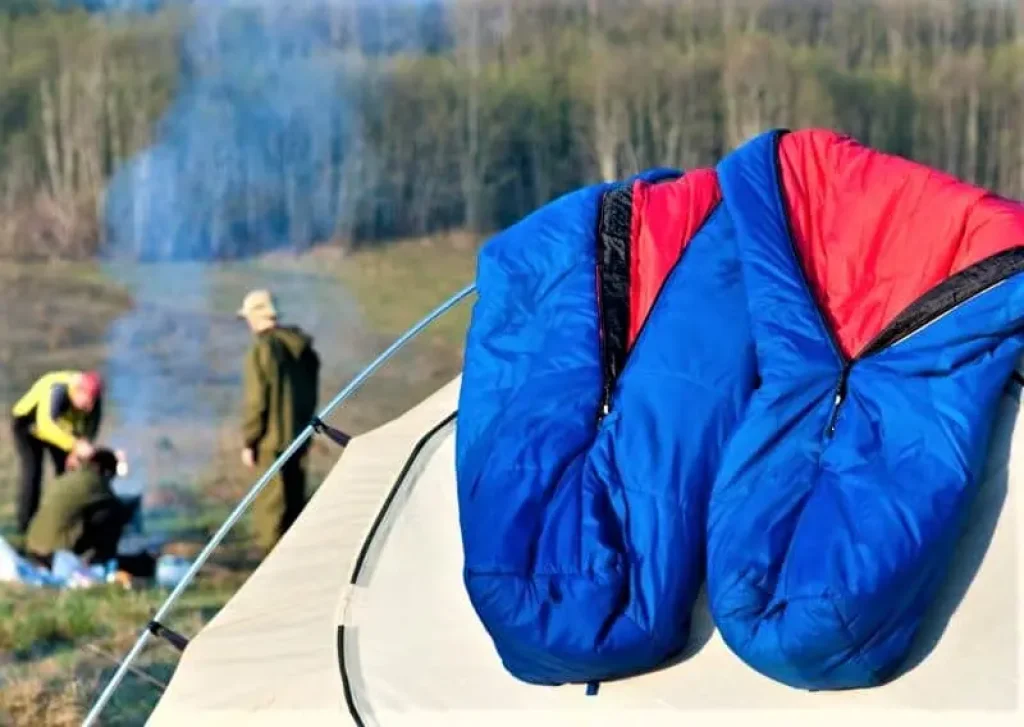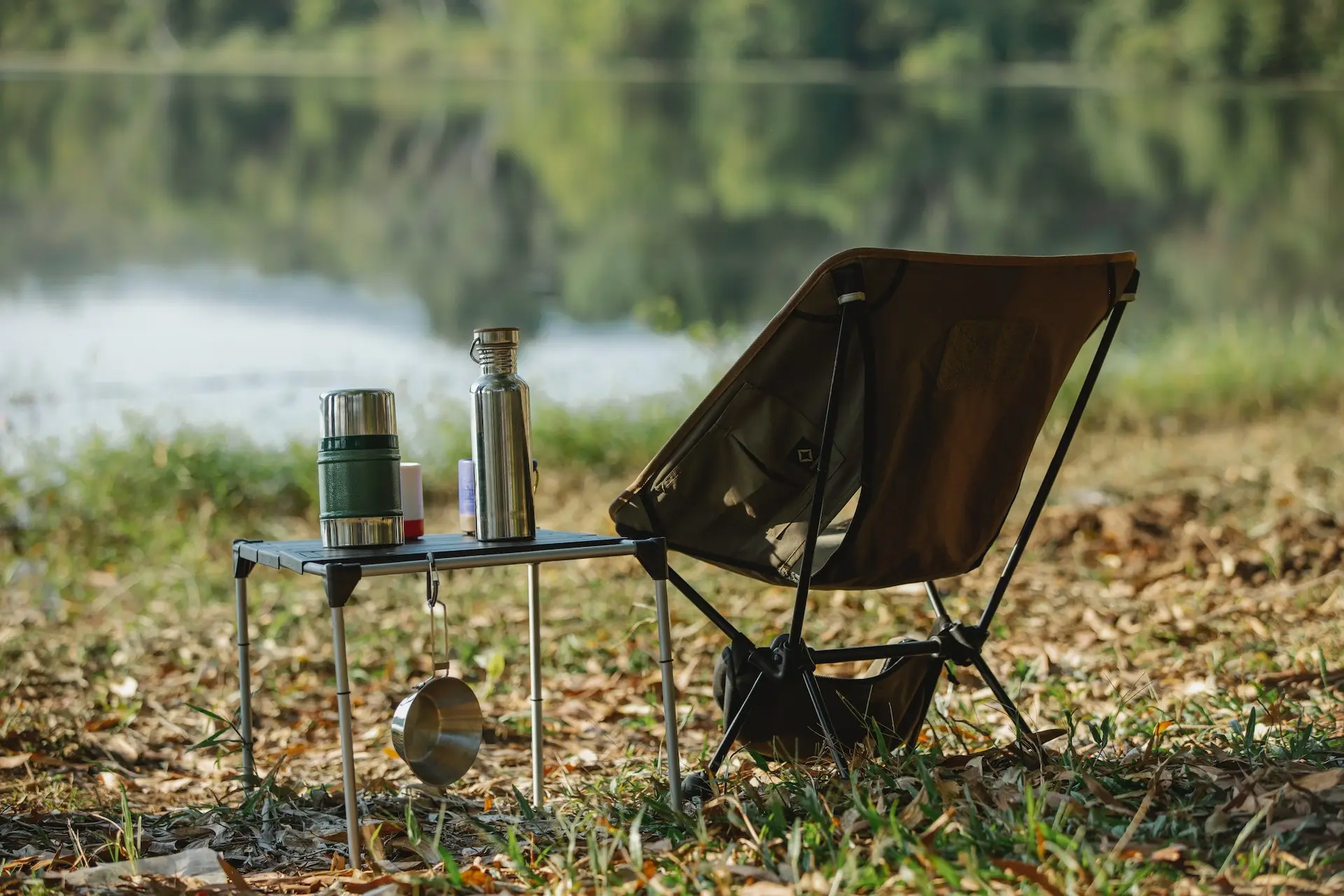How to Wash a Sleeping Bag: A Comprehensive Guide

Table of Contents
A good night’s sleep is essential for any outdoor enthusiast, and a clean, well-maintained sleeping bag is key to achieving that. While many people might overlook the importance of washing their sleeping bags regularly, doing so can significantly extend their lifespan and maintain their performance. In this article, we will guide you through the process of washing your sleeping bag, ensuring it stays fresh, hygienic, and ready for your next adventure. We will cover the various types of sleeping bags, the factors to consider before washing, and the step-by-step instructions for both hand-washing and machine-washing your sleeping bag. Furthermore, we will provide helpful tips for rinsing, drying, and storing your sleeping bag, as well as regular maintenance practices to keep it in top condition. By the end of this comprehensive guide, you’ll be well-equipped to give your sleeping bag the care it deserves, so you can enjoy many more cozy nights under the stars.
Understanding Your Sleeping Bag and Preparing for Washing
Before diving into the washing process, it’s crucial to understand the type of sleeping bag you have and the specific care instructions provided by the manufacturer. Generally, sleeping bags can be categorized into two main types: down-filled and synthetic-filled. Each type requires slightly different care, so knowing your sleeping bag’s composition is vital for proper maintenance.
Down-filled sleeping bags use clusters of down feathers, known for their exceptional warmth-to-weight ratio and compressibility. Down bags are typically more expensive and delicate, requiring extra caution during the washing process. Synthetic-filled sleeping bags, on the other hand, use man-made insulation fibers that mimic down’s insulating properties but are more affordable and easier to care for.
Before you start washing your sleeping bag, check the care label for specific instructions and recommendations. This may include information about the appropriate water temperature, detergent, and washing method. Following the manufacturer’s guidelines will help you avoid inadvertently damaging your sleeping bag during the washing process.

Next, prepare your sleeping bag for washing by emptying all pockets, zipping up any zippers, and fastening any Velcro closures. If your sleeping bag has any significant stains or heavily soiled areas, pre-treat them with a mild stain remover or gentle detergent, following the product’s instructions. Once you have taken these preliminary steps, you’ll be ready to move on to the actual washing process, whether it be hand-washing or machine-washing your sleeping bag.
Hand-Washing Your Sleeping Bag
Hand-washing is a gentle method suitable for both down-filled and synthetic-filled sleeping bags. It is particularly recommended for down bags, as it allows for greater control over the washing process and minimizes potential damage.
- Fill a large bathtub or basin with lukewarm water. Avoid using hot water, as it may damage the insulation or fabric of your sleeping bag.
- Add a small amount of mild, residue-free detergent specifically designed for down or synthetic insulation. Swirl the water to ensure the detergent is evenly distributed.
- Submerge your sleeping bag in the water, gently pressing it down to ensure it is fully soaked. Use your hands to gently agitate the water and work the detergent through the bag. Be cautious not to use excessive force, as this may damage the bag’s insulation or fabric.
- Allow the sleeping bag to soak for about 15-30 minutes, periodically agitating the water to help remove dirt and grime.
- Drain the water from the bathtub or basin, and carefully press out any excess water from the sleeping bag. Avoid wringing or twisting the bag, as this can damage the insulation.
- Refill the tub or basin with clean, lukewarm water, and gently rinse the sleeping bag, repeating the process until all detergent is removed.
- Once the sleeping bag is thoroughly rinsed, carefully press out any remaining water. You may use a clean, dry towel to help absorb additional moisture by laying the towel flat on the floor, placing the sleeping bag on top, and gently rolling the towel and bag together.
With your sleeping bag now clean, it’s time to move on to the drying process.
Drying Your Sleeping Bag
Drying your sleeping bag properly is essential to maintain its insulation and overall performance. Improper drying can cause clumping or damage the bag’s materials.
- Start by carefully lifting your sleeping bag out of the water, supporting its full length to prevent any strain on the fabric and seams.
- Lay the sleeping bag out flat, preferably outdoors in a shaded area, to begin air-drying. Avoid direct sunlight, as it can cause fading or damage to the materials.
- Flip the sleeping bag periodically to ensure even drying on both sides. This process may take several hours or even a full day, depending on the weather conditions and the type of insulation.
- For down sleeping bags, it’s crucial to break up any clumps that may form during the drying process. Gently massage the down clusters to redistribute them evenly throughout the bag.
- If using a dryer, set it to low heat or air-dry setting, and place your sleeping bag inside with a few clean tennis balls or dryer balls. These will help break up clumps and redistribute insulation. Check on the bag periodically to ensure it’s not overheating or becoming tangled.
- Once the sleeping bag is thoroughly dry, store it in a cool, dry place, either hanging up or in a large, breathable storage sack. Avoid compressing the bag for extended periods, as it can damage the insulation.
By following these steps, you’ll have a clean, dry sleeping bag, ready for your next adventure.
Additional Tips and Tricks for Sleeping Bag Care
Taking care of your sleeping bag goes beyond washing and drying. Here are some extra tips and tricks to help you maintain your sleeping bag and prolong its lifespan:
- Use a sleeping bag liner: A liner is an excellent way to keep your sleeping bag clean, as it can be easily removed and washed. This reduces the need for frequent washing of the entire bag, which can cause wear and tear over time.
- Ventilate your sleeping bag: After each use, turn your sleeping bag inside out and allow it to air out. This helps remove any moisture and odors that may have accumulated during your trip.
- Keep it clean: Make sure to change into clean clothes before getting into your sleeping bag. Dirt, oils, and sweat from your body can transfer to the bag, affecting its performance and longevity.
- Avoid eating and drinking inside your sleeping bag: Spills can damage the materials and insulation, and food particles can attract pests.
- Address small issues promptly: If you notice a small tear or a broken zipper, repair it as soon as possible to prevent the issue from worsening.
- Store it properly: When not in use, store your sleeping bag in a cool, dry place, either hanging up or in a large, breathable storage sack. Avoid compressing the bag for extended periods, as it can damage the insulation.
- Follow manufacturer guidelines: Always refer to your sleeping bag’s care label or manufacturer guidelines for specific cleaning, drying, and storage instructions.
- Know when to replace: Despite proper care, sleeping bags have a limited lifespan. If you notice a significant decrease in performance or obvious signs of wear, it may be time to invest in a new sleeping bag.

By implementing these additional tips and tricks, you can ensure your sleeping bag stays in top condition, providing you with warmth and comfort for many adventures to come. Remember to always refer to the manufacturer’s guidelines and care instructions to ensure you’re providing the best care for your specific sleeping bag. With a clean and well-maintained sleeping bag, you can enjoy countless nights of comfortable sleep under the stars.
Choosing the Right Detergent and Washing Equipment
Selecting the appropriate detergent and washing equipment is essential for effectively cleaning your sleeping bag without causing damage. Here’s a guide on what to look for when choosing these products:
- Gentle detergents: Opt for a mild detergent or a specialized sleeping bag cleaning product. These are formulated to be gentle on the fabrics and materials commonly used in sleeping bags. Avoid using regular laundry detergents, as they can be too harsh and damage the materials, insulation, or water-repellent coating.
- Front-loading washing machine: If you’re using a washing machine, make sure it’s a front-loading model without an agitator. Top-loading machines with agitators can cause damage to the sleeping bag by twisting and stretching the fabric.
- Large basin or bathtub: If you prefer to hand wash your sleeping bag, use a large basin or bathtub to ensure you have enough space to clean it thoroughly. A spacious container will enable you to submerge the entire bag and agitate it without causing damage.
- Soft-bristle brush: For spot cleaning, a soft-bristle brush can help gently remove stains without harming the fabric. Be careful not to scrub too hard, as this can damage the material or remove the water-repellent coating.
- Drying rack or line: When drying your sleeping bag, use a drying rack or line to support its weight evenly. This helps maintain the shape and integrity of the insulation. Avoid hanging the bag over a single point, as this can cause it to stretch or deform.
- Dryer balls or clean tennis balls: If you’re using a dryer, add a few dryer balls or clean tennis balls to the load. These help to break up clumps in the insulation and restore loft, ensuring your sleeping bag remains warm and comfortable.
- Mesh laundry bag: If your sleeping bag has delicate components or loose straps, consider placing it in a mesh laundry bag before washing it. This can help protect the bag from getting tangled or damaged during the washing process.
By using the right detergent and washing equipment, you can ensure your sleeping bag is cleaned effectively without causing harm to its materials or insulation. Always refer to the manufacturer’s guidelines when selecting products and washing methods to guarantee the best results and maintain the longevity of your sleeping bag. Proper care and maintenance will keep your sleeping bag in optimal condition, allowing you to enjoy warm and cozy nights during your outdoor adventures.

Storing Your Sleeping Bag Properly
Once your sleeping bag is clean and completely dry, it’s important to store it correctly to preserve its shape, insulation, and overall performance. Follow these tips for proper storage:
- Avoid compression: Don’t store your sleeping bag in a compression sack for extended periods, as this can damage the insulation and reduce its loft. Instead, use a larger storage sack or pillowcase to allow the insulation to maintain its loft.
- Keep it dry: Store your sleeping bag in a cool, dry location away from direct sunlight and moisture. Exposure to moisture can cause mildew, while sunlight can degrade the materials over time.
- Air it out: Before storing your sleeping bag, allow it to air out for a few hours to ensure any residual moisture evaporates. This will help prevent the growth of mold or mildew and keep your sleeping bag fresh and clean for your next adventure.
Additional Tips for Sleeping Bag Care
To ensure your sleeping bag remains in top condition and continues to provide you with a comfortable night’s sleep, follow these additional tips for proper care and maintenance:
- Use a sleeping bag liner: A liner not only adds an extra layer of warmth but also helps protect the sleeping bag from dirt, sweat, and oils, reducing the need for frequent washings. It’s much easier to wash a liner than the entire sleeping bag.
- Air it out after each use: When you wake up, spread your sleeping bag out to air it out and let any accumulated moisture evaporate. This helps prevent mold and mildew growth and keeps your sleeping bag fresh.
- Be gentle with zippers: Zippers can be a common point of failure in sleeping bags. To prolong their life, be gentle when zipping and unzipping your sleeping bag. Avoid pulling too hard or fast, which can cause the zipper to jam or break.
- Patch small tears promptly: If you notice any small tears or holes in your sleeping bag, repair them as soon as possible using a sleeping bag repair kit or adhesive fabric patches. This will prevent the damage from worsening and affecting the bag’s insulation.
- Avoid storing your sleeping bag on the ground: When not in use, try to keep your sleeping bag off the ground to prevent dirt, moisture, and insects from getting inside.
- Keep food away from your sleeping bag: To avoid attracting wildlife and insects, never eat or store food inside your sleeping bag. Always store food in designated containers and keep it at a safe distance from your sleeping area.
- Rotate your sleeping bag: If you have multiple sleeping bags, consider rotating their use to prolong their lifespan. This allows the insulation to recover and maintain its loft over time.
Understanding Different Types of Sleeping Bags
Knowing how to wash your sleeping bag is crucial, but it’s also essential to understand the various types of sleeping bags and how they differ in terms of materials, insulation, and care requirements. Here’s a brief overview of the three main types of sleeping bags:
- Down-filled sleeping bags: These bags are filled with down feathers, which provide excellent insulation and warmth-to-weight ratio. Down sleeping bags are generally more expensive, but they’re lightweight, compressible, and have a longer lifespan when properly cared for. It’s important to use a gentle, down-specific detergent when washing down sleeping bags to protect the delicate feathers.
- Synthetic-filled sleeping bags: Synthetic insulation is typically made from polyester fibers and is less expensive than down. These bags are generally heavier and bulkier, but they perform better in damp conditions and dry faster. Synthetic sleeping bags can be washed with regular mild laundry detergent, but be sure to follow the manufacturer’s care instructions.
- Hybrid sleeping bags: A hybrid sleeping bag combines both down and synthetic insulation, offering a balance between the benefits of each type. Care for hybrid bags will depend on the specific construction and materials used, so always consult the manufacturer’s guidelines for cleaning and maintenance.

By understanding the differences between these sleeping bag types, you can make more informed decisions when purchasing, using, and caring for your sleeping bag. Proper care, including regular cleaning, will ensure you get the most out of your investment and enjoy many comfortable nights in the great outdoors.
The Importance of a Clean Sleeping Bag for Health and Comfort
Maintaining a clean sleeping bag is not just about preserving its performance and longevity; it also has a direct impact on your health and comfort during outdoor adventures. By understanding the significance of a clean sleeping bag, you’ll be more motivated to follow the washing and care guidelines mentioned in the previous sections:
- Enhanced comfort: A clean sleeping bag provides a more comfortable sleeping environment, free from dirt, sweat, and unpleasant odors. This contributes to a better night’s sleep, which is essential for recovering from a long day of hiking or other outdoor activities.
- Allergy prevention: Regular cleaning of your sleeping bag reduces the accumulation of allergens like dust mites, pollen, and mold spores. This helps to minimize the risk of allergic reactions and other respiratory issues, ensuring a healthier camping experience.
- Hygiene: A well-maintained sleeping bag promotes overall hygiene, reducing the likelihood of skin irritations, rashes, and other health concerns caused by bacteria and dirt.
- Peace of mind: Knowing that your sleeping bag is clean and well-cared for gives you peace of mind during your outdoor adventures. You can focus on enjoying your trip and making unforgettable memories without worrying about the cleanliness of your sleeping environment.
Conclusion
Properly washing and caring for your sleeping bag is essential for maintaining its performance, comfort, and durability. By following the steps outlined in this guide, you can effectively clean and care for your sleeping bag, ensuring it remains in optimal condition for many outdoor adventures. Remember to consider the specific instructions provided by the manufacturer and tailor your approach accordingly. With regular cleaning, proper storage, and timely maintenance, your sleeping bag will be a dependable companion, keeping you warm and cozy during your camping trips and outdoor excursions.





